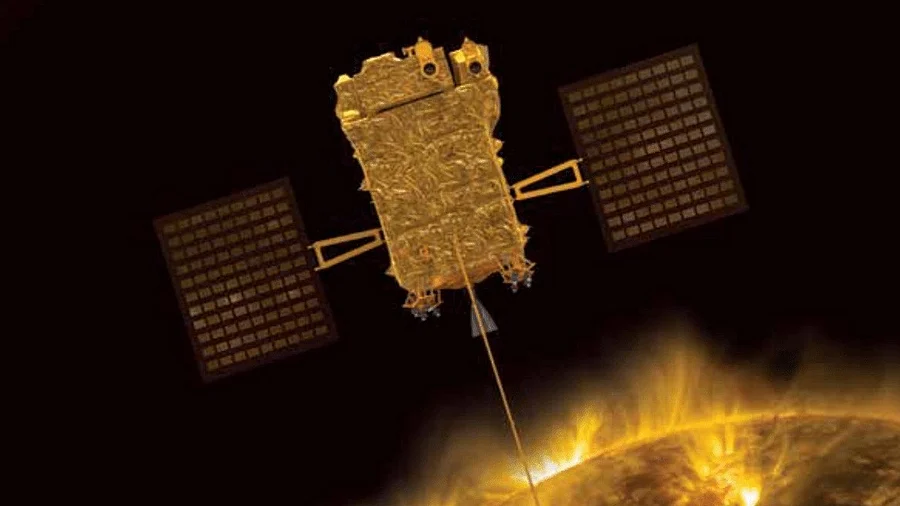Aditya L1: India's First Mission to Study the Sun in Depth
India's first mission specifically designed to study the Sun in-depth is the Aditya L1 mission. On September 2, 2023, it was launched from the Andhra Pradesh spaceport of Sriharikota. The Sun-Earth Lagrange point L1, which is about 1.5 million kilometers from Earth, will be the center of the spacecraft's halo orbit.
The Aditya L1 mission has four main objectives:
- To study the dynamics of the solar corona, the outermost layer of the Sun's atmosphere.
- To understand the mechanisms of solar wind acceleration, which is the stream of charged particles that flows out from the Sun and fills the solar system.
- To investigate the physics of the partially ionized plasma that makes up the solar corona.
- To study the initiation of coronal mass ejections (CMEs), which are large eruptions of plasma and magnetic field from the Sun.
The Aditya L1 spacecraft is equipped with seven scientific instruments to carry out these observations. These instruments include:
- A coronagraph, which blocks out the light from the Sun's disk so that the fainter corona can be observed.
Coronagraph scientific instrument for Aditya L1 mission - A spectral imager, which can measure the temperature and composition of the solar corona.
Spectral imager scientific instrument for Aditya L1 mission - A heliospheric imager, which can image the solar wind as it flows past the spacecraft.
Heliospheric imager scientific instrument for Aditya L1 mission - A magnetometer, which can measure the magnetic field of the solar wind.
Magnetometer scientific instrument for Aditya L1 mission - A plasma analyzer, which can measure the composition and properties of the solar wind plasma.
Plasma analyzer scientific instrument for Aditya L1 mission - A radiometer, which can measure the thermal radiation from the solar corona.
Radiometer scientific instrument for Aditya L1 mission - A white light imager, which can image the Sun in white light.
 |
| White light imager scientific instrument for Aditya L1 mission |
The Aditya L1 mission will make several important contributions to our understanding of the Sun. It will help us to:
- Understand the mechanisms that heat the solar corona to millions of degrees, even though the Sun's surface is only about 10,000 degrees.
- Learn more about the solar wind, which is a stream of charged particles that flows out from the Sun and can affect the Earth's atmosphere and climate.
- Discover new insights into the physics of the partially ionized plasma that makes up the solar corona.
- Study the initiation of CMEs, which can cause geomagnetic storms that can disrupt power grids and communications systems on Earth.
The Aditya L1 mission is a valuable addition to the international fleet of solar telescopes. It will complement the observations of other missions, such as the Solar Dynamics Observatory (SDO) and the Parker Solar Probe, and help to further our understanding of the Sun.
The Aditya L1 mission is a major milestone for India's space program. It is a proud moment for the country and a testament to the hard work and dedication of the scientists and engineers who made it possible.
The Aditya L1 mission is a truly groundbreaking mission that will help us to better understand the Sun and its impact on the Earth. It is a testament to India's growing capabilities in space science and technology, and it is sure to make a significant contribution to our understanding of the Sun.
I hope this blog post has given you a deeper understanding of the Aditya L1 mission. If you have any questions, please feel free to leave a comment below.








0 Comments